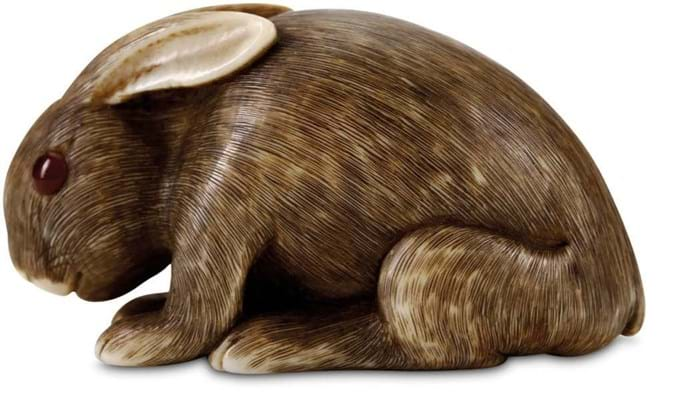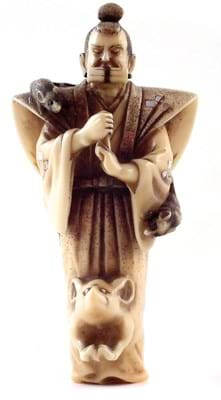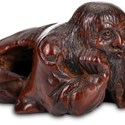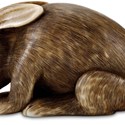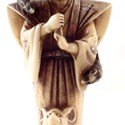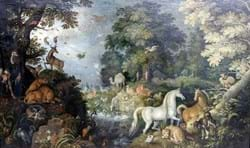Writing of a mixed-quality netsuke collection bought by his wealthy 19th century kinsman, Charles Ephrussi, Edmund de Waal said: “They are the first things [among Charles’ treasures] that have any connection to everyday life, even an exotic everyday life. They are wonderful, highly sensual, of course, but they are not princely like his [Charles’] Medici bed or his Marie Antoinette lacquers. They are for touching.”
Doubtless, public awareness of the netsuke – objects that can combine immensely skilled craftsmanship and huge visual and tactile appeal – grew with the publication of Hare with Amber Eyes. But in truth, this is one of several areas of the Japanese market that has stuttered in recent years because of the twists of collecting fashion and an uncompromising ivory policy in the US.
The feeling is that the market is polarised – and, among London’s international houses, it is Bonhams only that continues to fly the flag for this venerable collecting area. The cognoscenti now need to cast their eye further afield.
West London and north-west
Chiswick Auctions (25% buyer’s premium) and Peter Wilson (22% buyer’s premium) in Nantwich both offered collections of netsuke as part of sales on February 27 and February 15.
After 83% of the 80 netsuke got away to a hammer £35,000 at Chiswick – twice the pre-sale expectations – the house Oriental specialist Lazarus Halstead said: “The success of the netsuke sale shows the strength of the Japanese market. It also fits into our careful strategy of dedicated themed sales within the field of Asian art.”
The selection did include a hare with amber eyes, an unsigned 19th century carving (in ivory rather than the boxwood work in the de Waal collection). It has well-defined fur and large eyes inlaid with red amber, and, vitally, came with a good provenance, having been bought at Christie’s in 1968. From one of three such well-provenanced collections, it was estimated at £800-1000 and sold to a collector at £1500.
The best-seller was an early 19th century dark wood netsuke signed Miwa with a provenance to three well-regarded collections.
Also illustrated here, the 1½in (3.5cm) wide piece was a humorous representation of the exiled priest Shunkan (a famous 12th century monk who plotted to overthrow the samurai government). Against an £800-1000 estimate, it sold at £5500.
Other prices included £2000 for an ebony netsuke of Daikoku as a Rat-Catcher signed Kaigyokusai Masatsugu; a within-estimate £1600 on an unsigned 19th century Nagoya School wooden netsuke of a coiled dragon with horn-inlaid eyes; and a double-estimate £1600 on a 19th century ivory netsuke of Shoki the Demon Queller with an Oni under his feet signed Hidemasa.
Two ivory netsuke at the other end of the price scale were an unsigned Meiji ivory snail on a roof tile at £120 and a 19th century horse with lowered head and coloured mane signed Mitsusada which went a shade below estimate at £360.
“The success of the Netsuke sale shows the strength of the Japanese market
Rat Magician caught
At Peter Wilson’s sale, the 13 netsuke came from a collection built up by an Altrincham doctor and his wife, all provenanced to their purchases at Sotheby’s and the like in the 1960s.
Top seller was the Edo period, mother-of-pearl inlaid Rat Magician, illustrated on this page. Unusually large at 3in (8cm) tall, it was signed Ho-Jitsu (c.1790s-1873) who worked in the closing years of the Edo period (1603-1868) but, significantly, before the expansion of the export trade to the West during the Meiji period.
Estimated at £1500-2000, the netsuke went to a German bidder at £4600.
One of the more unusual pieces was a manju netsuke, a flat circular ivory in the form of the rice cake of the same name. Carved with Shoki the Demon Queller and measuring 2¼in (5.8cm) diameter, it tripled the estimate by selling at £650.
Other prices ranged from £90 on an 18th century ivory of a sitting saintly figure, possibly a rakan, through to a London double-estimate bid of £2000 on an Edo period hardwood netsuke of a tigress and cub, faintly signed and possibly by Kokei of Kuwana.



